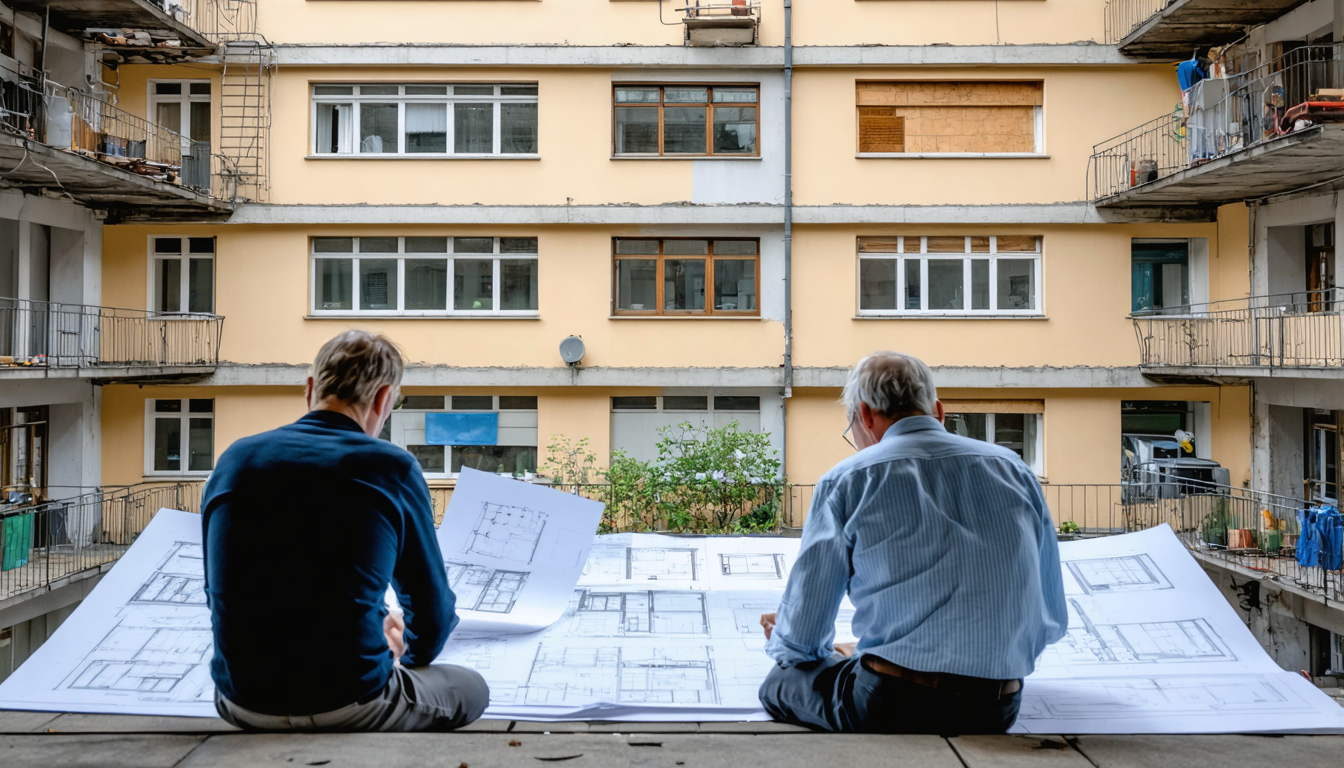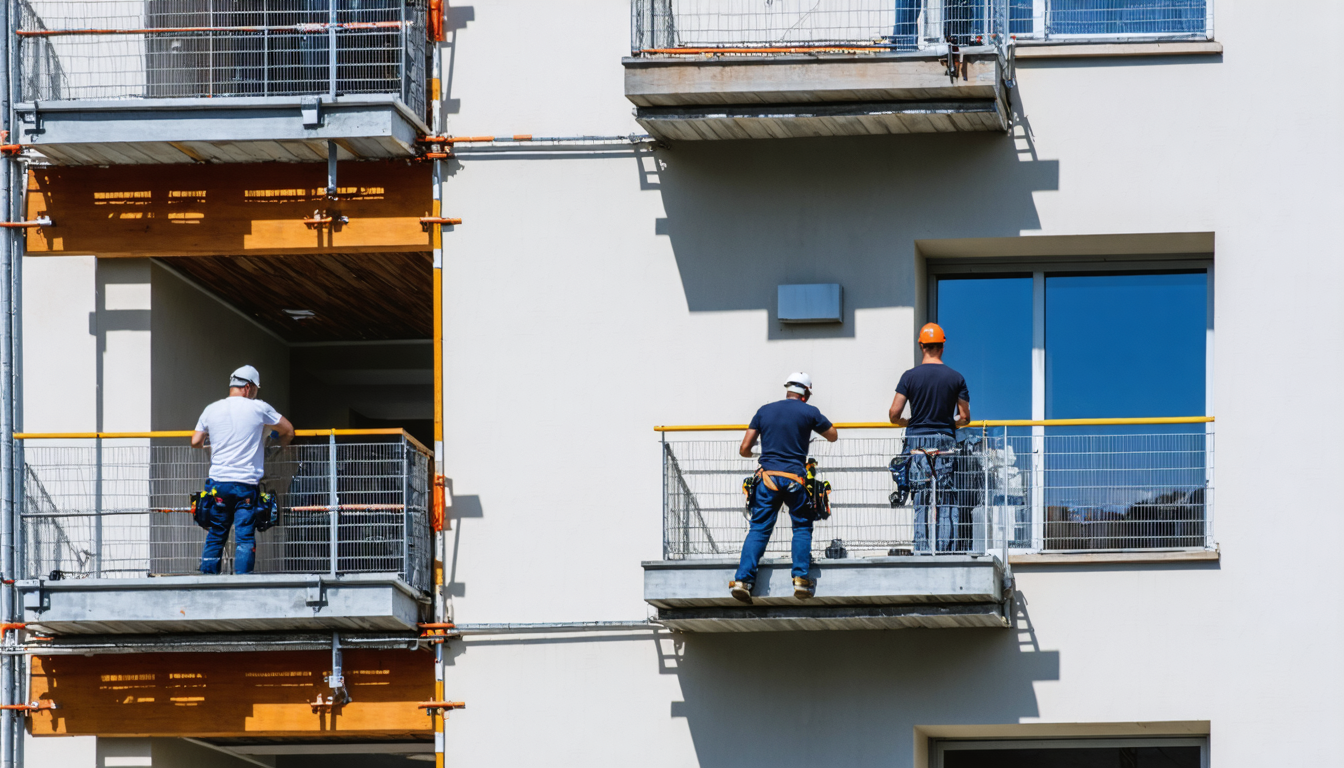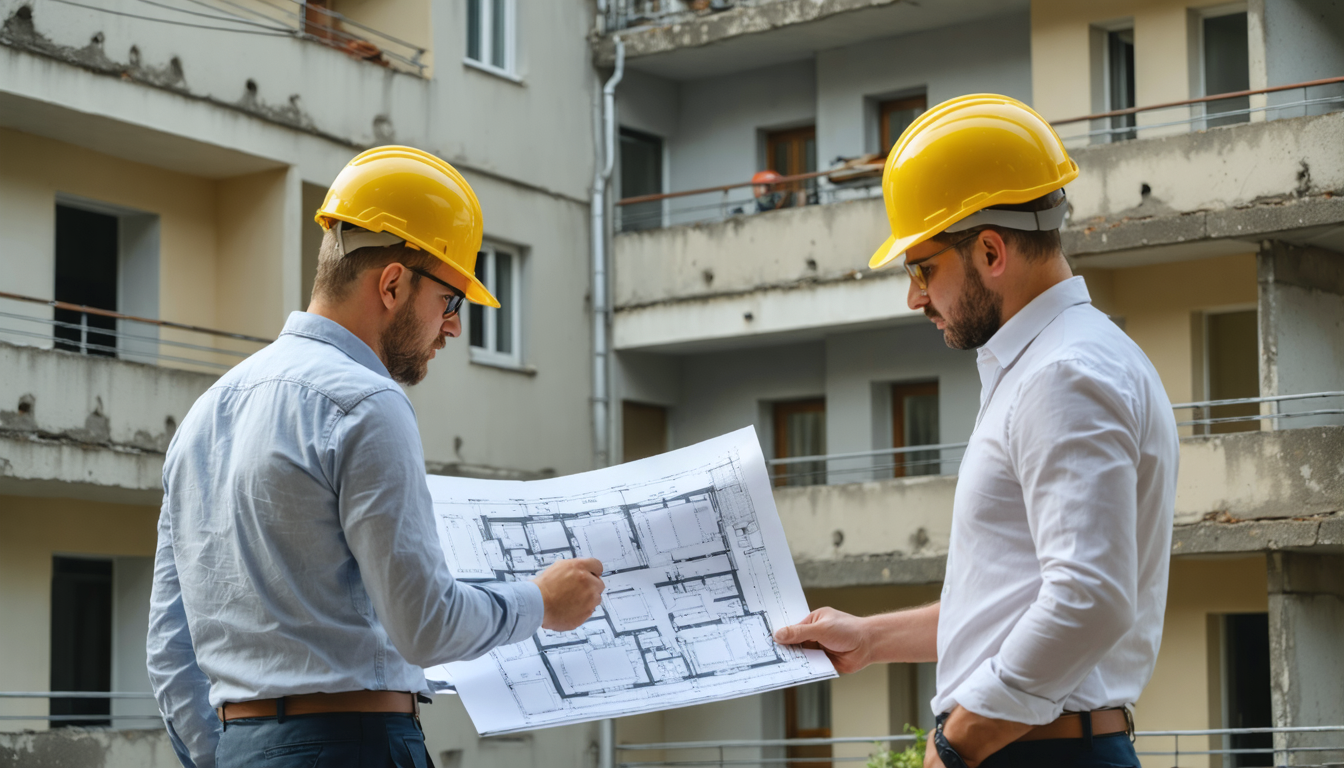- The Growing Demand for Retrofitting & Its Impact on Insurance
- Unique Challenges of Insuring Older Apartment Buildings
- Breaking Down Conventional Insurance Limitations
- Innovative Solutions: Customized Policies for Retrofits
- Enhancing Risk Assessment and Underwriting in Retrofit Projects
- The Role of Technology in Modern Insurance Products
- Real-Life Success Stories and Case Studies
- Future Trends in Insurance for Retrofits
- Policy Considerations and Recommendations for Stakeholders
- Conclusion
1. The Growing Demand for Retrofitting & Its Impact on Insurance
Retrofitting older apartment buildings is gaining traction as property owners look to improve energy efficiency, reduce operational costs, and increase occupant comfort. As cities and communities push for greener, more sustainable urban environments, building owners are incentivized to invest in retrofits, despite the challenges that come with older constructions.
This shift has significant implications for the insurance industry. Insurers are now tasked with evaluating risks that extend beyond traditional property damage. They must factor in the potential impacts of construction work, changes in building materials, and updates to infrastructure.
These new variables call for customized products that mesh both the historic elements of older buildings and modern enhancements that reduce long-term risks.

2. Unique Challenges of Insuring Older Apartment Buildings
Older apartment buildings come with a host of challenges that complicate the insurance process. The original construction materials, outdated electrical and plumbing systems, and unique architectural designs increase risk exposure. For instance: Structural uncertainties: Aging materials and building techniques may not meet modern standards.
Historical components: Renovations must respect the building’s heritage, sometimes limiting the use of advanced materials. Compliance issues: Retrofitting must meet current safety codes, causing financial strain and additional underwriting risk. These challenges lead insurers to require extensive risk assessments.
Property owners face higher premiums unless they can demonstrate that retrofit projects are reducing inherent risks, such as improved fire suppression systems or updated structural reinforcements.
3. Breaking Down Conventional Insurance Limitations
Traditional insurance models often fall short when it comes to retrofitting older buildings. The one-size-fits-all approach does not address the blended risk profile these projects present. Typically, conventional policies do not consider the multifaceted nature of retrofit work.
For example, standard coverage might exclude damages that occur during construction or omit the cost benefits of energy-efficient improvements. Furthermore, insurers may limit policy scope when improvements could inadvertently expose additional vulnerabilities. Without tailored coverage, both property owners and insurers risk financial losses in the event of unforeseen complications.
This gap in coverage has opened the door for more inventive insurance products engineered specifically for retrofit scenarios.

4. Innovative Solutions: Customized Policies for Retrofits
To bridge this gap, insurers have begun developing products designed to address the intricacies of retrofit projects. Customized policies now offer flexible coverage options, ensuring that retrofitting efforts are adequately insured throughout the entire development process. These policies often incorporate several key elements:
Project-specific coverage: This provides insurance that adapts to various phases of retrofitting, from initial assessment to final construction. Enhanced builder’s risk: Policies are designed to cover unique construction risks typically experienced during major renovations.
Energy efficiency incentives: Insurance plans may offer premium discounts for projects that achieve significant energy improvements. By embracing these innovations, insurers are better positioned to mitigate risks while offering property owners peace of mind as they update their buildings for the future.
5. Enhancing Risk Assessment and Underwriting in Retrofit Projects
A more robust approach to risk assessment is critical for pricing and underwriting retrofit insurance. Traditional models must be recalibrated to account for modern materials, improved safety systems, and the unique requirements of older structures.
Through more detailed inspections, historical analysis, and continuous monitoring during construction, insurers can tailor their underwriting process to accurately assess risk levels. Innovative underwriting techniques include: Detailed pre-retrofit assessments that analyze building history, current condition, and proposed upgrades.
Integration of real-time data on construction progress to promptly address emerging risks. Collaboration with retrofit specialists to ensure that policy terms align with industry best practices and regulatory requirements. These methods take much of the guesswork out of the insurance process, helping insurers set realistic premiums that reflect the true risk profile of the project.

6. The Role of Technology in Modern Insurance Products
Advancements in technology play a pivotal role in shaping modern insurance products for retrofitting projects. Data analytics, IoT devices, and smart building systems allow insurers to collect detailed information that informs both underwriting and claims processing.
Key technological contributions include: Sensors and monitoring systems that continuously track building performance, detecting issues before they escalate into costly claims. Advanced data analytics that predict potential risk areas by examining patterns in historical data and real-time conditions. Digital platforms enabling seamless integration of project updates, ensuring that insurers are always in the know regarding construction progress and any emerging risks.
By leveraging these technologies, insurers can better manage their exposure, provide more accurate premium rates, and ultimately offer housing providers a level of protection that modern retrofit projects demand.
7. Real-Life Success Stories and Case Studies
Successful cases of customized insurance for retrofit projects shed light on the practical benefits of these innovative products. In one instance, a property management company retrofitting a century-old apartment building partnered with an insurer to develop a policy that covered all aspects of the project.
The policy included interim coverage during construction, adjustments for improved energy performance, and coverage for structural enhancements. The outcome was a reduction in both the overall insurance premium and long-term risk. The success of this policy not only benefited the property owner by lowering operating costs but also set a benchmark for future retrofit projects.
Other case studies similarly demonstrate that tailored insurance policies can make retrofitting financially viable while ensuring comprehensive risk management.

8. Future Trends in Insurance for Retrofits
Looking ahead, the insurance landscape for retrofitting older apartment buildings is expected to evolve significantly. Future trends include: Greater adoption of parametric insurance solutions that provide prompt claims payouts based on predefined triggers, such as specific damage thresholds during construction.
Increased use of artificial intelligence in underwriting, leading to more accurate risk predictions and faster policy issuance. A shift towards more integrated, holistic approaches that consider long-term building performance post-retrofit, bridging the gap between construction risk and ongoing operational safety.
As these trends mature, property owners and developers can expect insurance products that not only protect their investments during the retrofitting process but also support the ongoing sustainability of the buildings.
9. Policy Considerations and Recommendations for Stakeholders
For property owners, insurers, and regulators involved in the retrofitting of older apartment buildings, a few policy considerations and recommendations can help steer the industry toward innovative and sustainable practices:
Collaborative approach: Insurers should work closely with retrofitting experts and property owners right from the planning stages. Early collaboration can ensure that insurance policies reflect the realities of retrofit risks and provide adequate coverage throughout the project lifecycle.
Transparent communication: Clear, detailed communication between all parties allows for better risk assessment. Property owners must provide full disclosure of project details, while insurers should openly share their underwriting criteria.
Continuous evaluation: Policies should be regularly reviewed and updated to reflect any changes in building status or construction conditions. This dynamic approach ensures that coverage remains both relevant and effective over time. Incentives for green upgrades: Insurance companies can further encourage sustainable practices by offering premium discounts or other incentives for projects that incorporate energy efficiency or environmentally friendly materials.
Focus on education: Training programs for insurance professionals, construction managers, and property owners on the nuances of retrofitting older structures can enhance the collective understanding of risks, best practices, and the benefits of tailored insurance products.
10. Conclusion
In conclusion, as the market for retrofitting older apartment buildings continues to grow, the insurance industry must evolve to meet the specific challenges presented by these projects.
Cutting-edge policies, enhanced risk assessments, technological integration, and forward-thinking approaches are paving the way for a more secure and sustainable future. With innovative insurance solutions tailored to retrofits, property owners can confidently invest in the upgrades their buildings need, ensuring that their investments are protected every step of the way.
